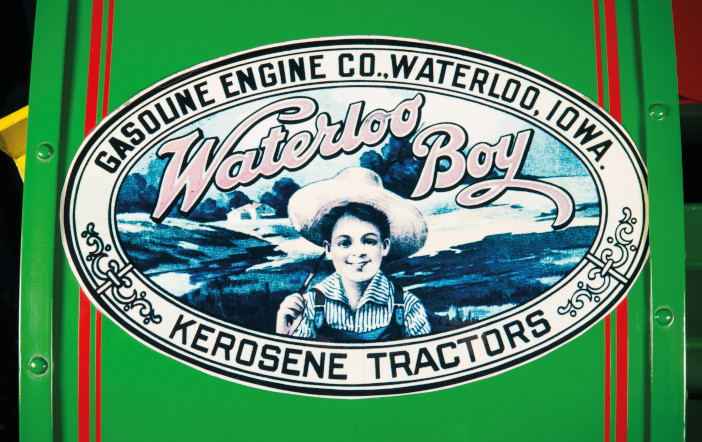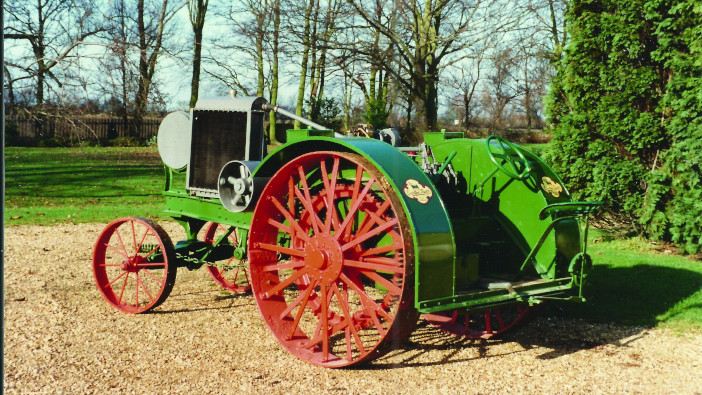The Overtime and Waterloo Boy Model N were basically the same tractor selling under different names, and between them they achieved an enormous influence on tractor development. MIKE WILLIAMS reports.
Waterloo Boy and Overtime tractors were made in America by the Waterloo Gasoline Engine Co, a company established by John Froelich in 1893 after he had built his first tractor to expand his contracting business. At that time power farming was still dominated by steam and there were probably fewer than 10 tractors in existence when Froelich formed his company, which soon stopped making tractors and concentrated instead on petrol engines to provide stationary power.
The petrol engines sold under the Waterloo Boy name were a success, and the company returned to tractor production in 1912 to provide an additional outlet for its engines, which benefited from the big increase in tractor sales during the First World War, and the Waterloo Boy Model N announced in 1916 was a popular choice in America and Canada. It also attracted customers in the UK, but the company that imported them decided that the Waterloo Boy name was not suitable for the UK market, and the tractors were sold under the Overtime name instead. Approximately 4,000 of the Waterloo Boy tractors were imported into Britain during the war and the early 1920s, and most of these carried the Overtime identity.

Overtime tractors shared basically the same specification as the Waterloo Boy Model N available in America. They were built on a traditional steel girder frame on which the twin-cylinder horizontal engine, the radiator and the fuel tank were individually mounted. The power output was 25hp, a cone clutch and a two-speed gearbox provided a 3 mph top speed, and the final drive was through a large diameter ring gear on each rear wheel. It was not a technically advanced design, and some of the features, such as the final drive, exposed to damage caused by dirt and stones, plus the old-fashioned chain-operated steering mechanism, were already becoming outdated, but there were also some positive features. These included the rugged build that helped to establish a reputation for reliability – important at a time when the majority of tractor drivers had previously worked with horses and had little or no experience with engine maintenance.
One of those impressed by the Overtime was a young man who owned a successful garage business in Belfast. The young man was Harry Ferguson, a farmer’s son who had decided to leave home because he disliked the slow pace of working with horses. His garage provided an opportunity to develop his exceptional mechanical skills, and the business provided car servicing and repairs in addition to selling Vauxhall cars. Ferguson’s spare time activities included motorsports and also building and flying the first powered aircraft in Ireland.
He decided to add tractor sales to his business activities during the First World War when the British government introduced an urgent home-grown food campaign to increase production at a time when large numbers of men and horses were leaving British farms for the battlefields of Europe.
The government campaign encouraged farmers to use tractor power to increase productivity, and Ferguson realised this would boost tractor sales. His choice of tractor for his business was the Overtime, and this soon became his personal interest. He did much of the demonstrating and selling, and his efforts were so successful that they attracted official interest, and he was asked by the Board of Agriculture to make a tour of farms in Ireland to help operators to use their tractors more efficiently. Ferguson’s experience with the Overtime was the start of his interest in tractor design, and this included the research and development programme that produced the Ferguson System of implement attachment and control, one of the most important developments in power farming history.

While the Overtime was influencing tractor history in Britain, its twin, the Waterloo Boy, was making a big impact on the tractor industry in America. Deere & Co, the company behind the John Deere brand name, had built its success on ploughs and other implements and it did not have a tractor available to benefit from the wartime sales surge.
A development programme to produce a John Deere tractor was making some progress, but in 1918 this was replaced by the decision to buy an existing tractor manufacturer to achieve a short-cut into the market. Their choice was the Waterloo Gasoline Engine Co and its Waterloo Boy tractor range, for which Deere & Co paid $2,350,000. The takeover was the start of John Deere’s long and immensely successful tractor history, and the Model N remained in production under Deere company ownership but carrying the Waterloo Boy name, while a new model was being developed. The replacement arriving in 1923 was the John Deere Model D, a completely new design apart from the horizontal two-cylinder engine layout which was inherited from the Waterloo Boy and remained a popular John Deere tractor feature for the next 40 years.
The Model D was the end of the road for the Waterloo Boy and Overtime tractor twins which had helped to influence two of the most far-reaching developments in tractor history.



